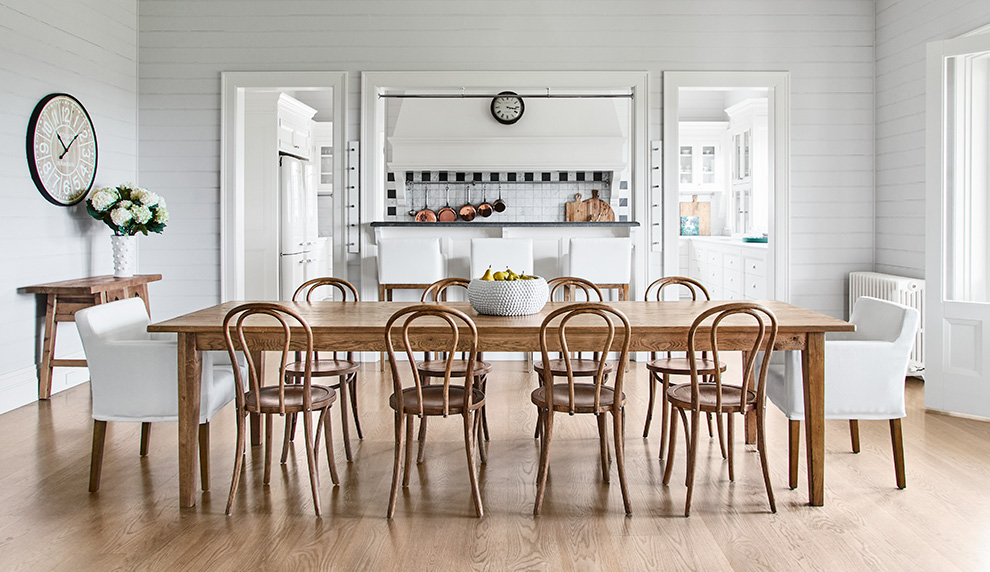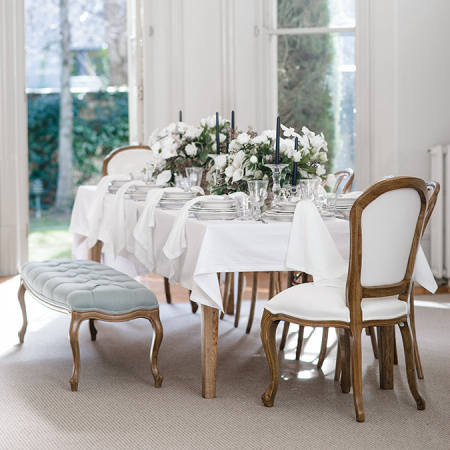Whatever inspiration you’re after…. a new recipe to wow the family, a little bit of help making the perfect bed, styling a sideboard, some lifestyle articles or what’s new at Provincial, our Journal will bring you stories to brighten your day.
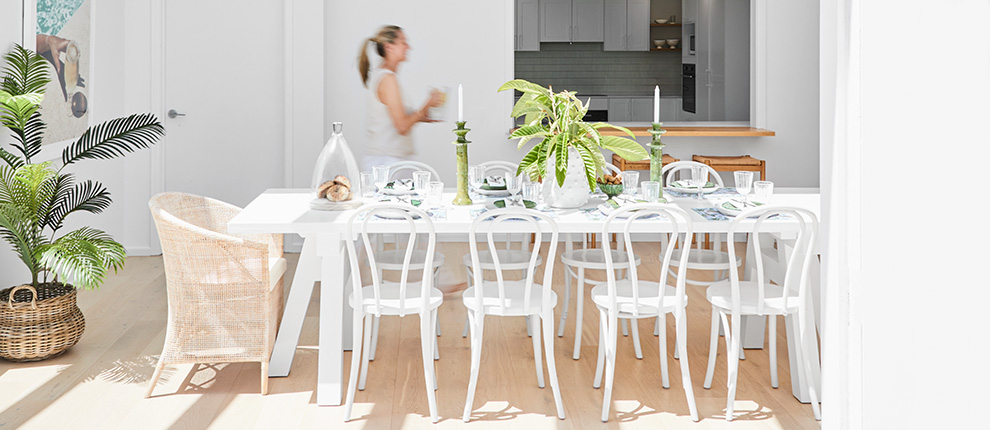
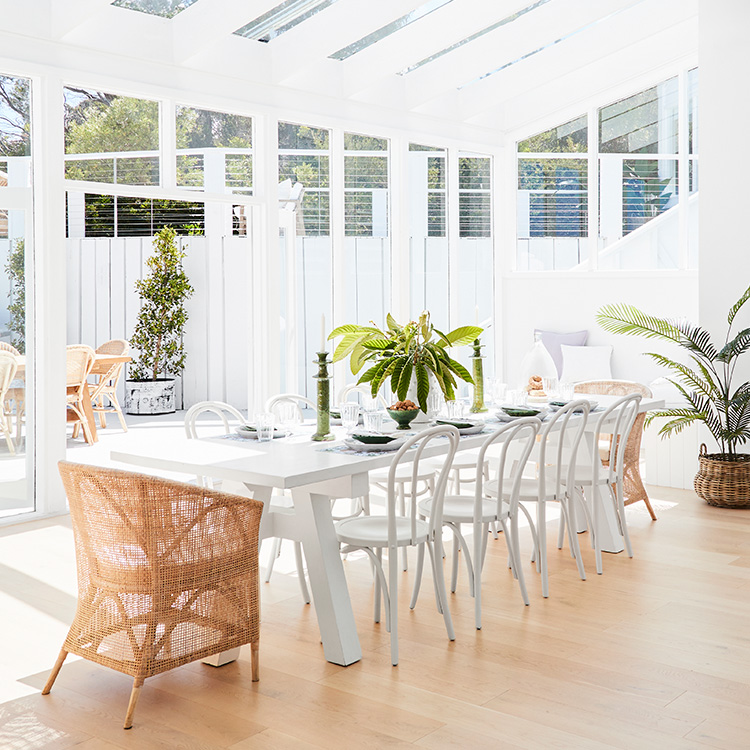
If the kitchen is the heart of the home, the dining room could be described as the soul.
The dining room (or area) serves as a place for socialising, entertaining visitors, appreciating meals with family, enjoying conversations and fostering relationships while enjoying food in a comfortable and inviting environment. That’s a lot of responsibility for one room!
The demand for a separate dining room has shifted over the years towards open-plan living with the kitchen and eating area located close together – it’s a more casual approach to everyday living and entertaining.
Whether it’s a formal, designated room just for dining or part of a more open-plan dining/living area – it’s all about choosing the right furniture – especially getting the chair height right in relation to the height of your dining table.
THE IDEAL HEIGHT FOR YOUR DINING CHAIRS
The good thing is there is a recognised standard dining table height (74cm) and a standard height for a chair seat (45cm) - of course, there are always variations so don’t assume that the heights will be standard - always check. Guests need to be able to cross their legs under the table if they want to, so for comfort, you need 30cm from the top of the chair seat and the bottom of the tabletop – not the top of the table! Tables are often of different thicknesses and can have bars or supports underneath which will lower the height available for people’s legs to fit under the table.
Sometimes, even a small height difference can make a big difference in comfort. So, if the table is higher than 74cm and the chair seat is lower than 45cm it can be enough to throw off the balance.
If you have ever sat on a banquette in a restaurant that was either too high or too low, you know how uncomfortable it can be. It's surprising how often they get it wrong!
Ideally, it’s better to purchase the table and chairs at the same time so you can see them together and try them in the store, but if that’s not an option, choose the table first before you start looking for your dining chairs.
If you love your existing table and are just updating your dining chairs, it’s a good idea to take some measurements before you go shopping. It’s important to know the distance between the legs of the table to determine how many chairs can fit down the sides. Additionally, you should check if any obstructions underneath the table will affect the seating arrangements. This information will help you make a more informed decision when choosing your new chairs.
If possible, try sitting in a few different chairs to see what feels best and suits your table. Take a few different height people with you - then you’ll know if the chairs are going to be comfortable for everyone. Look for chairs with a comfortable seat and adequate back support, your guests will thank you when they’re enjoying your hospitality and lingering long after the meal is finished.
The back height of the chairs can also affect the overall look and feel of your dining area. If the dining area is small, you may also wish to avoid solid, high-backed chairs as these can restrict visual flow and make the space feel small. A low or open-backed chair would be a much better option as it won’t interrupt the visual flow in the room. You’ll create a more spacious and open feel if you have an unobstructed view.
A small dining space comes with its challenges, but you can create the illusion of space with a bench seat on one (or both sides) of the table that can be pushed under the dining room table when not in use. Measure the distance between the table legs, so you’re sure it will fit!
Furniture can enhance our daily lives, but to do this, it requires a practical assessment of our needs and intended usage. Consider what you truly require to suit your lifestyle. For instance, if you throw regular dinner parties, or host long lunches, the size of your dining table and the type of chairs you choose are even more important.
We’d all love a long table and being able to seat 10 (or 12 at a squeeze) but if you only host a one-off Christmas lunch each year, look at your everyday requirements and maybe a smaller table will suffice, or you could look at an extension table – then you can have the best of both worlds.
For extra seating, occasional chairs can do double duty and be brought from the living room or bedroom to sit at the head of the table – this is where chairs with arms will look right at home.
HANDY MEASUREMENTS
As a general rule, a table measuring:
- 180cm long seats six people.
- 240cm long seats eight people.
- 300cm long seats ten people.
Table height should be about 74cm.
Allow 25-30cm between the bottom of the tabletop and the chair height.
Seat height of a dining chair should be about 45cm.
Allow a width of 60 cm for each person – this takes into account the chair width and allows for space on either side of the chair (and some elbow room) so guests don’t feel cramped.
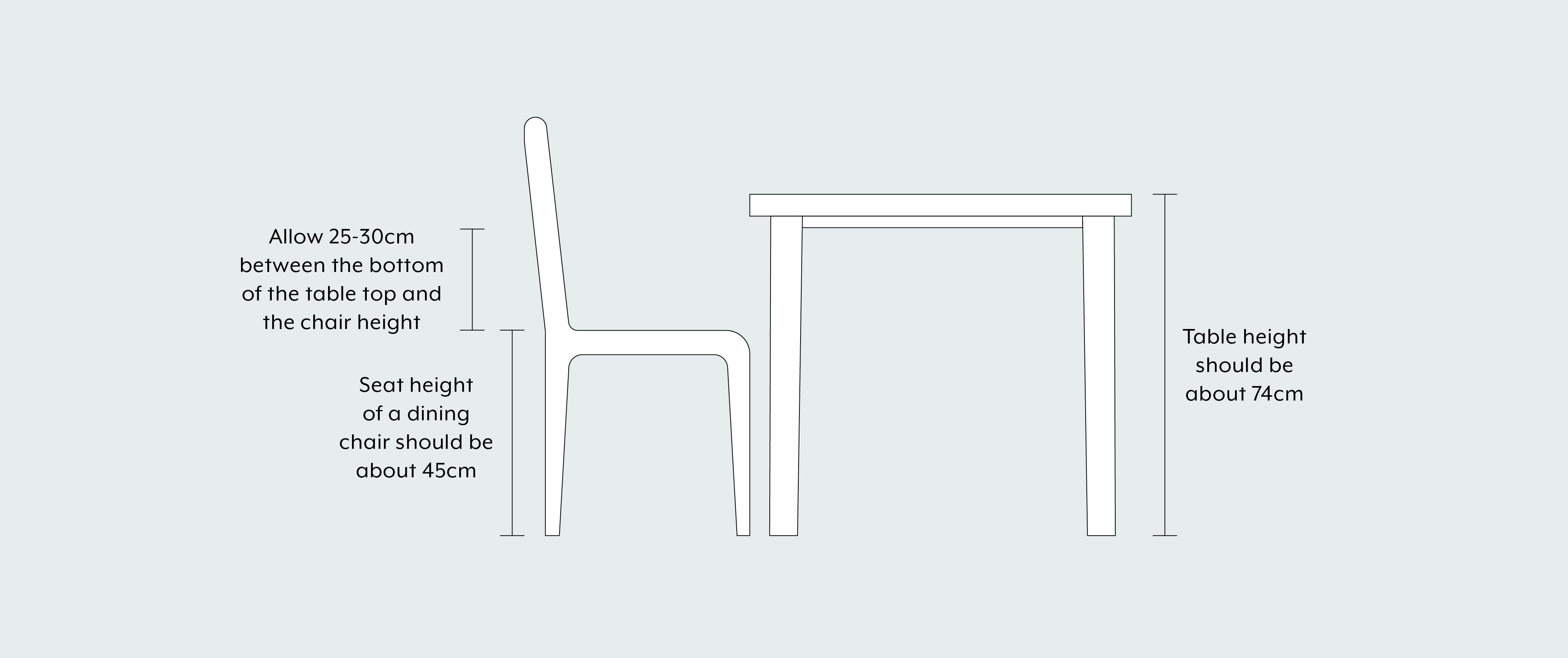
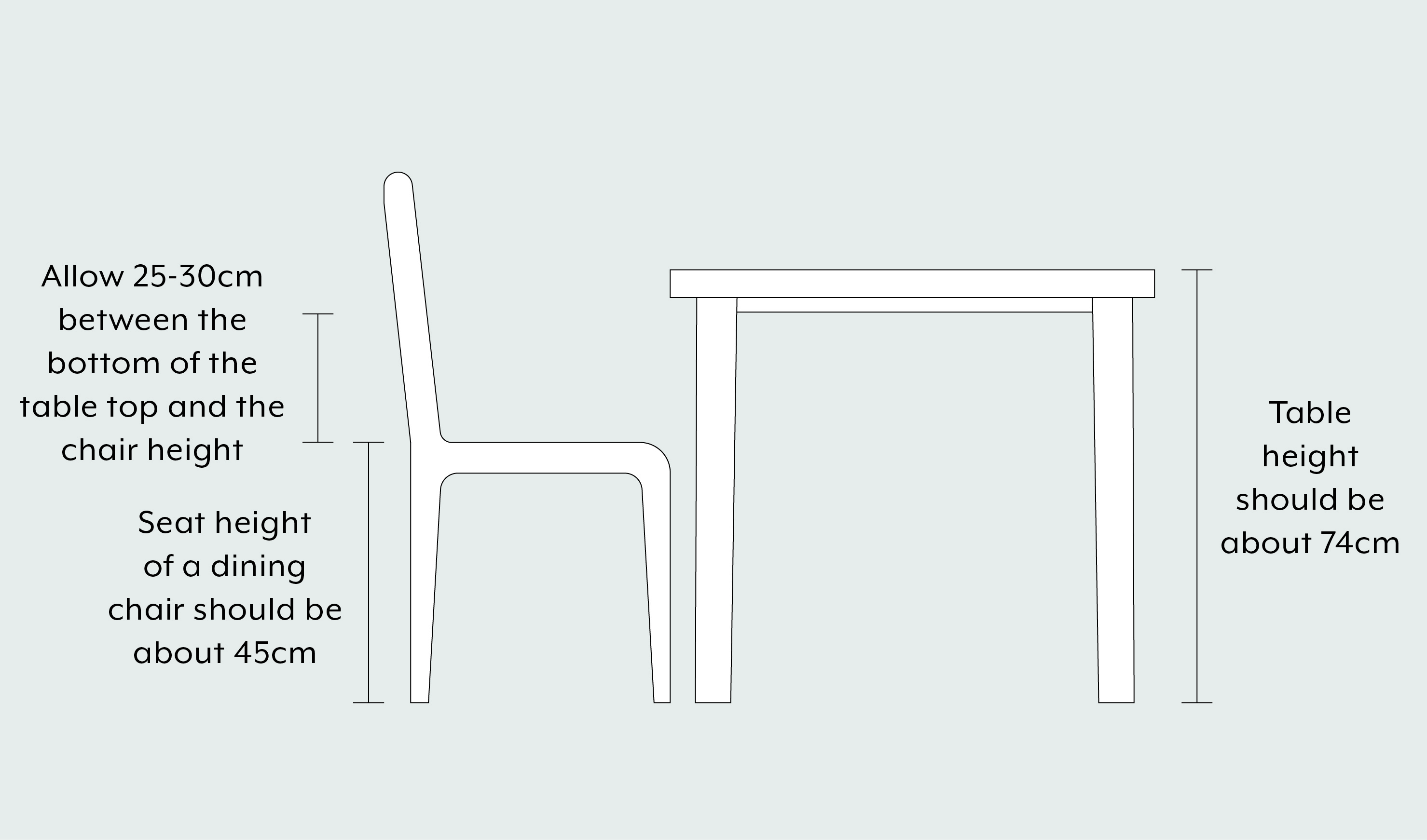
Comfort is the key for regular dining but if you’re trying to fit a few extra people around the table as a one-off occasion, then everyone will make allowances for being a bit squished or sitting a bit high or a bit low – they’ll be happy just to be included!





